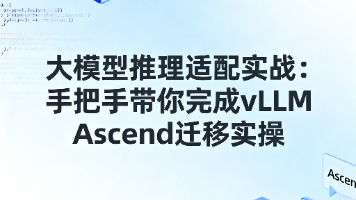深度学习模型压缩#2-量化
深度学习模型压缩
深度学习模型压缩
上接
模型的剪枝是为了减少参数量和运算量,而量化是为了压缩数据的占用量。
量化
所谓的模型量化就是将浮点存储(运算)转换为整型存储(运算)的一种模型压缩技术。
好处:提升计算效率;减少内存和存储占用;减少能耗。
对于量化对象,主要有以下三个,实际中可能是量化其中的多个甚至全部:
weight(权重):weight的量化是最常规也是最常见的。量化weight可达到减少模型大小和memory footprint等目的。
activation(激活函数输出):实际中activation往往是占内存使用的大头,因此量化activation不仅可以大大减少memory footprint。更重要的是,结合weight的量化可以充分利用整数计算获得性能提升。
gradient(梯度):相对上面两者略微小众一些,因为主要用于训练。它主要作用是在分布式计算中减少通信开销,单机训练时也可减少backward时的开销。
对于量化位数,可以有很多种选择。大体可分为几类:
float16量化是比较保险的做法,大多数情况下可以不丢失太多精度的情况下有明显的性能提升。因为都是浮点,相对来说容易,就不细展开了。
8位是比较常见的,也是相对成熟的。相关的研究很多,各种主流框架也基本都支持。
8位以下目前而言学界相对玩得多些,工业界有少量支持,但还没有太成熟。8位以下主要是4,2和1位(因为位数为2的幂次性能会更好,也更容易实现)。如果精度低至1位,也就是二值化,那可以用位运算进行计算。这对处理器而言是很友好的。
模型量化实现步骤
1-在输入数据(通常是权重或者激活值)中统计出相应的min_value和max_value;
2-选择合适的量化类型,对称量化(int8)还是非对称量化(uint8);
3-根据量化类型、min_value和max_value来计算获得量化的参数Z/Zero point和S/Scale;
4-根据标定数据对模型执行量化操作,即将其由FP32转换为INT8;
5-验证量化后的模型性能,如果效果不好,尝试着使用不同的方式计算S和Z,重新执行上面的操作;
Pytorch模型量化
# 导入第三方的库函数
import os
from io import open
import time
import torch
import torch.nn as nn
import torch.quantization
import torch.nn.functional as F
# 创建LSTM模型类
class LSTMModel(nn.Module):
"""整个网络包含一个encoder, 一个recurrent模块和一个decoder."""
def __init__(self, ntoken, ninp, nhid, nlayers, dropout=0.5):
super(LSTMModel, self).__init__()
# 预定义一些网络层
self.drop = nn.Dropout(dropout)
self.encoder = nn.Embedding(ntoken, ninp)
self.rnn = nn.LSTM(ninp, nhid, nlayers, dropout=dropout)
self.decoder = nn.Linear(nhid, ntoken)
self.init_weights()
self.nhid = nhid
self.nlayers = nlayers
def init_weights(self):
'''
初始化模型权重
'''
initrange = 0.1
self.encoder.weight.data.uniform_(-initrange, initrange)
self.decoder.bias.data.zero_()
self.decoder.weight.data.uniform_(-initrange, initrange)
def forward(self, input, hidden):
'''
搭建网络并执行前向推理
'''
emb = self.drop(self.encoder(input))
output, hidden = self.rnn(emb, hidden)
output = self.drop(output)
decoded = self.decoder(output)
return decoded, hidden
def init_hidden(self, bsz):
'''
初始化hidden层的权重
'''
weight = next(self.parameters())
return (weight.new_zeros(self.nlayers, bsz, self.nhid),
weight.new_zeros(self.nlayers, bsz, self.nhid))
# 创建一个词典类,用来处理数据
class Dictionary(object):
def __init__(self):
self.word2idx = {}
self.idx2word = []
def add_word(self, word):
'''
在词典中添加新的word
'''
if word not in self.word2idx:
self.idx2word.append(word)
self.word2idx[word] = len(self.idx2word) - 1
return self.word2idx[word]
def __len__(self):
'''
返回词典的长度
'''
return len(self.idx2word)
class Corpus(object):
def __init__(self, path):
self.dictionary = Dictionary()
# 分别获取训练集、验证集和测试集
self.train = self.tokenize(os.path.join(path, 'train.txt'))
self.valid = self.tokenize(os.path.join(path, 'valid.txt'))
self.test = self.tokenize(os.path.join(path, 'test.txt'))
def tokenize(self, path):
"""对输入的文件执行分词操作"""
assert os.path.exists(path)
# 将新的单词添加到词典中
with open(path, 'r', encoding="utf8") as f:
for line in f:
words = line.split() + ['<eos>']
for word in words:
self.dictionary.add_word(word)
# 标记文件的内容
with open(path, 'r', encoding="utf8") as f:
idss = []
for line in f:
words = line.split() + ['<eos>']
ids = []
for word in words:
ids.append(self.dictionary.word2idx[word])
idss.append(torch.tensor(ids).type(torch.int64))
ids = torch.cat(idss)
return ids
# 设置模型的路径
model_data_filepath = 'data/'
corpus = Corpus(model_data_filepath + 'wikitext-2')
ntokens = len(corpus.dictionary)
# 搭建网络模型
model = LSTMModel(
ntoken = ntokens,
ninp = 512,
nhid = 256,
nlayers = 5,
)
# 装载预训练的权重
model.load_state_dict(
torch.load(
model_data_filepath + 'word_language_model_quantize.pth',
map_location=torch.device('cpu')
)
)
# 将模型切换为推理模式,并打印整个模型
model.eval()
print(model)
# 获取一个随机的输入数值
input_ = torch.randint(ntokens, (1, 1), dtype=torch.long)
hidden = model.init_hidden(1)
temperature = 1.0
num_words = 1000
# 遍历数据集进行前向推理并将结果保存起来
with open(model_data_filepath + 'out.txt', 'w') as outf:
with torch.no_grad(): # no tracking history
for i in range(num_words):
output, hidden = model(input_, hidden)
word_weights = output.squeeze().div(temperature).exp().cpu()
word_idx = torch.multinomial(word_weights, 1)[0]
input_.fill_(word_idx)
word = corpus.dictionary.idx2word[word_idx]
outf.write(str(word.encode('utf-8')) + ('\n' if i % 20 == 19 else ' '))
if i % 100 == 0:
print('| Generated {}/{} words'.format(i, 1000))
with open(model_data_filepath + 'out.txt', 'r') as outf:
all_output = outf.read()
print(all_output)
bptt = 25
criterion = nn.CrossEntropyLoss()
eval_batch_size = 1
# 创建测试数据集
def batchify(data, bsz):
# 对测试数据集进行分块
nbatch = data.size(0) // bsz
# 去掉多余的元素
data = data.narrow(0, 0, nbatch * bsz)
# 在bsz批处理中平均划分数据
return data.view(bsz, -1).t().contiguous()
test_data = batchify(corpus.test, eval_batch_size)
# 获取bath块的输入数据
def get_batch(source, i):
seq_len = min(bptt, len(source) - 1 - i)
data = source[i:i+seq_len]
target = source[i+1:i+1+seq_len].view(-1)
return data, target
def repackage_hidden(h):
"""
用新的张量把隐藏的状态包装起来,把它们从历史中分离出来
"""
if isinstance(h, torch.Tensor):
return h.detach()
else:
return tuple(repackage_hidden(v) for v in h)
# 评估函数
def evaluate(model_, data_source):
# 打开评估模式
model_.eval()
total_loss = 0.
hidden = model_.init_hidden(eval_batch_size)
with torch.no_grad():
for i in range(0, data_source.size(0) - 1, bptt):
# 获取测试数据
data, targets = get_batch(data_source, i)
# 执行前向推理
output, hidden = model_(data, hidden)
hidden = repackage_hidden(hidden)
output_flat = output.view(-1, ntokens)
# 获取训练loss
total_loss += len(data) * criterion(output_flat, targets).item()
return total_loss / (len(data_source) - 1)
# 初始化动态量化模块
quantized_model = torch.quantization.quantize_dynamic(
model, {nn.LSTM, nn.Linear}, dtype=torch.qint8
)
print(quantized_model)
def print_size_of_model(model):
torch.save(model.state_dict(), "temp.p")
print('Size (MB):', os.path.getsize("temp.p")/1e6)
os.remove('temp.p')
print_size_of_model(model)
print_size_of_model(quantized_model)
torch.set_num_threads(1)
# 评估模型的运行时间
def time_model_evaluation(model, test_data):
s = time.time()
loss = evaluate(model, test_data)
elapsed = time.time() - s
print('''loss: {0:.3f}\nelapsed time (seconds): {1:.1f}'''.format(loss, elapsed))
time_model_evaluation(model, test_data)
time_model_evaluation(quantized_model, test_data)
https://blog.csdn.net/WZZ18191171661/article/details/103332338?
待更新

魔乐社区(Modelers.cn) 是一个中立、公益的人工智能社区,提供人工智能工具、模型、数据的托管、展示与应用协同服务,为人工智能开发及爱好者搭建开放的学习交流平台。社区通过理事会方式运作,由全产业链共同建设、共同运营、共同享有,推动国产AI生态繁荣发展。
更多推荐
 已为社区贡献1条内容
已为社区贡献1条内容








所有评论(0)